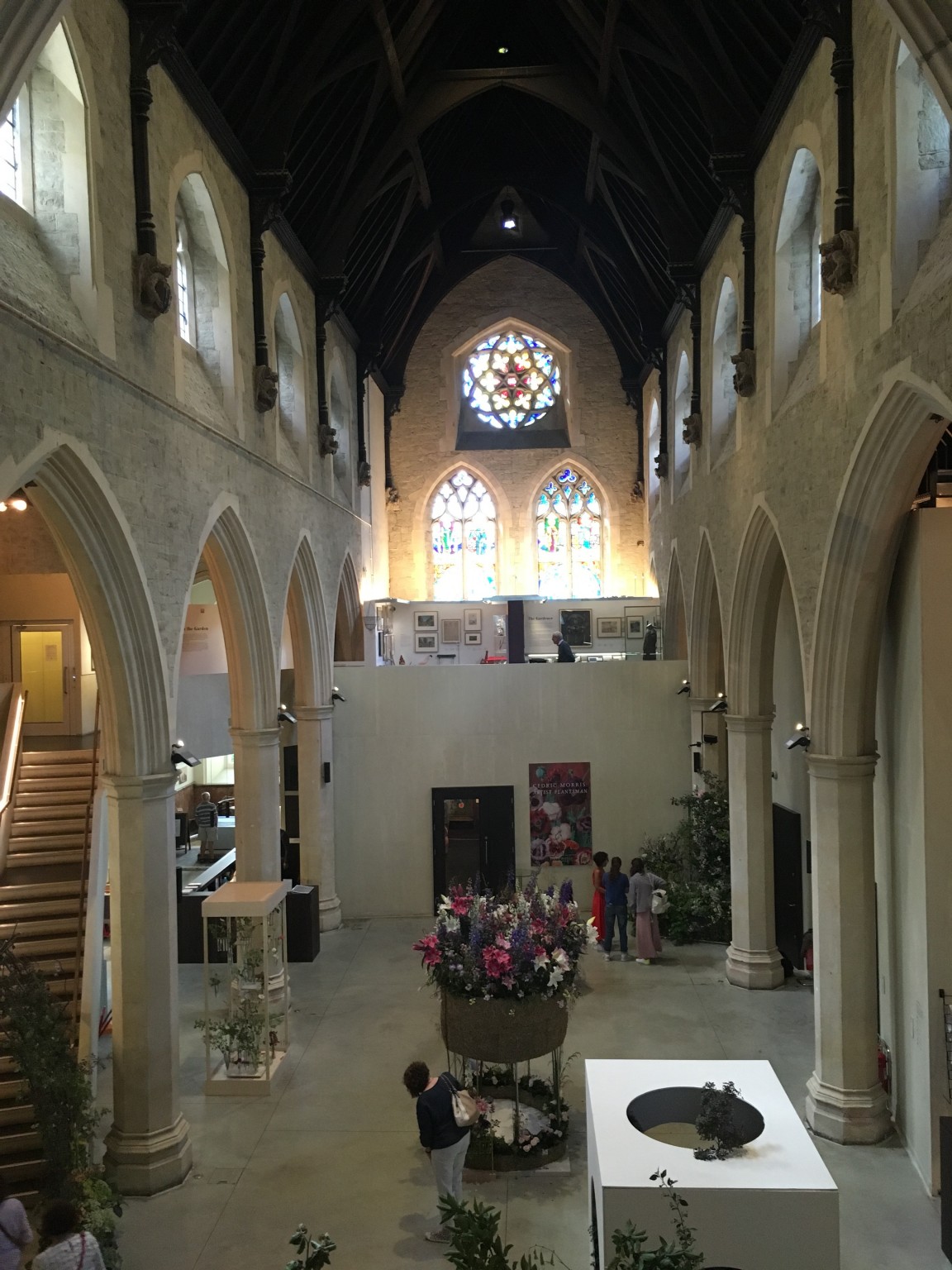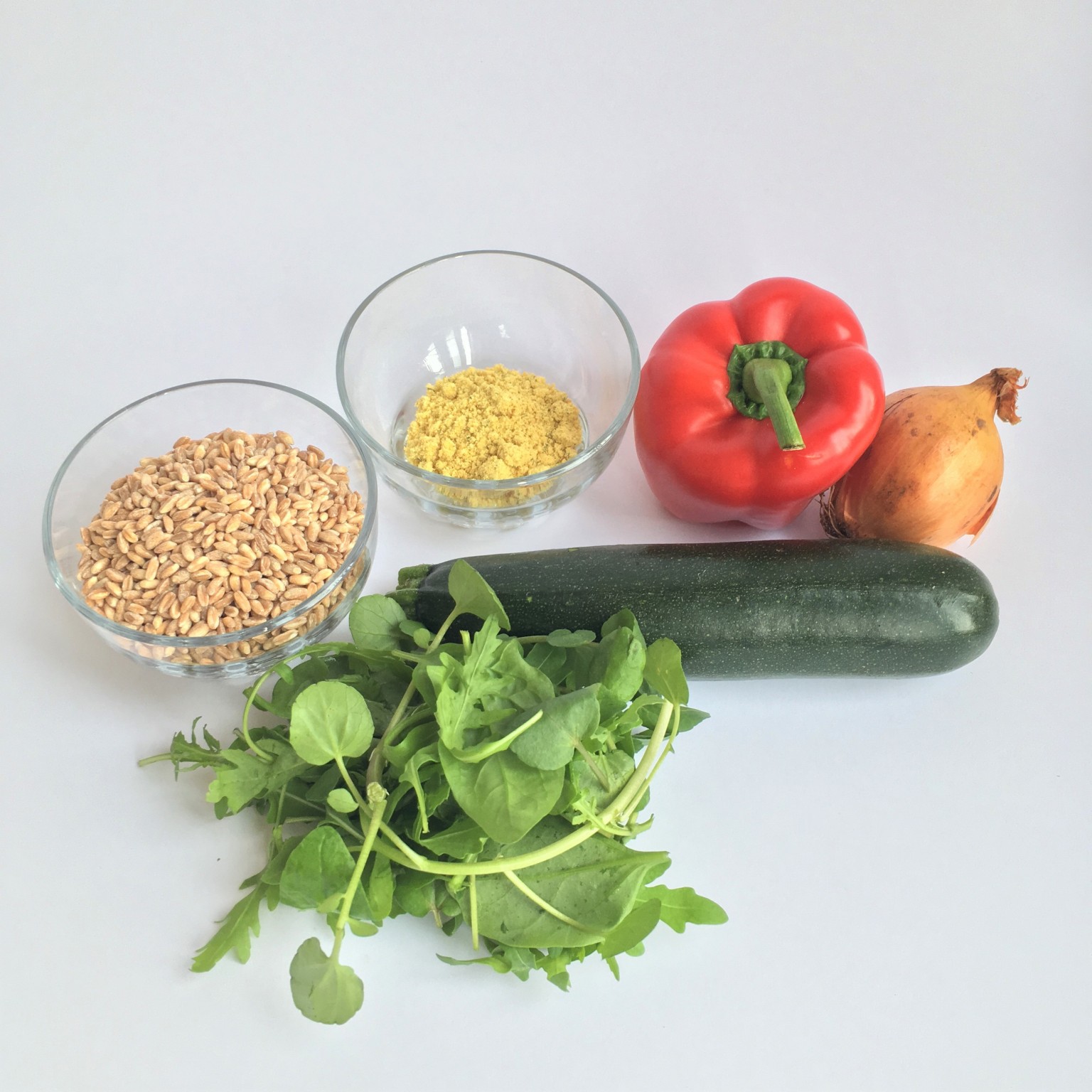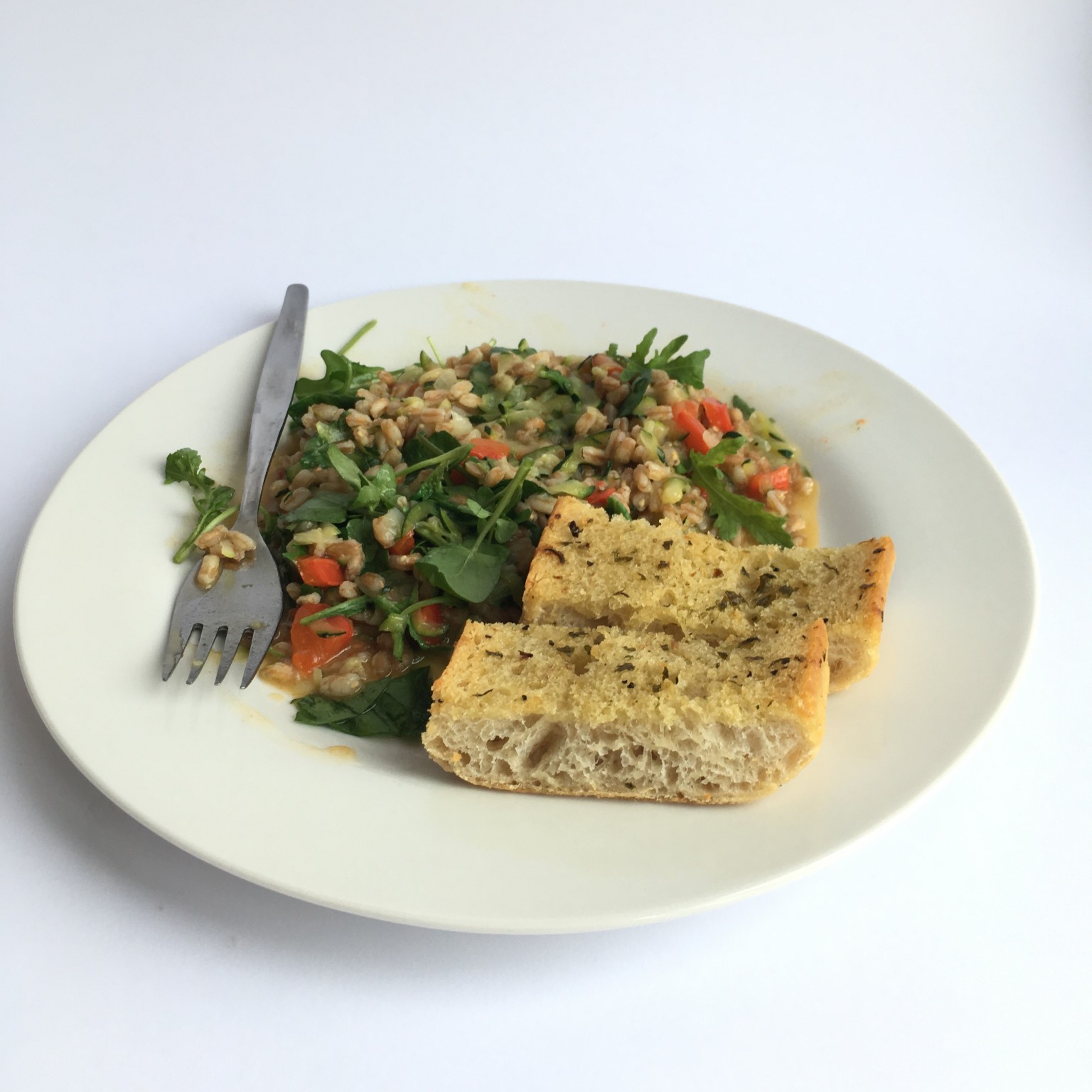Monday 2nd July - Standing Poses, Spelt Risotto and Some Other Interesting Things (hopefully!)
52 @ 50 no. 39 - The Garden Museum in Lambeth, London
This is a little gem - an oasis of calm amidst the bustle of traffic that crosses Lambeth Bridge. Housed in an old church, The Garden Museum explores and celebrates British gardens and gardening with art exhibitions, displays of gardening artefacts, events and, of course, a garden. Bonus - there's a really nice cafe too. Double bonus - there's a little tiny door at the end of the church which leads to a very tight, steep and slightly claustrophobic spiral staircase. Up and up you go (133 steps to be precise) and out onto the roof of the tower of the church, which used to be called St Mary-at-Lambeth. The view you are presented with at the end of your climb is unexpected and unfamiliar. I've never seen London from this angle before and I couldn't quite get my bearings. The Houses of Parliament were almost opposite me but London Bridge was almost behind me because of the sharp bend in the river. On the bright and sunny day that I was there, it was a glorious panorama.
The Museum was founded in 1977 by Rosemary Nicholson after she discovered that the abandoned church was due for destruction. The tomb of England's first great gardener and planthunter John Tradescent (1570-1638) was within it's churchyard and was also to be demolished so Rosemary set about raising the funds to buy and renovate it. Today it is light and bright, spacious and interesting - a wonderful blend of old and new architecture with a delightful, secluded courtyard garden to sit in for a while. If you're visiting London and need a gentle break to calm the senses and gather yourself or pause for a coffee before heading out into the traffic, The Garden Museum is a lovely place to visit.

The view from the top of the tower

Inside the museum
A Bit About... Why Standing Poses Are Such An Important Part of Our Practice
I include standing poses in every single class I teach (except if it's a Yin Yoga class, where there are no standing poses at all). They are a very important part of the practice for a number of reasons:
They teach us to engage and tone the muscles of the legs. We learn to lift up the kneecaps and strengthen the thighs - both the fronts of the thighs (quadriceps) and the back (hamstrings) - and we strengthen our ankles and calf muscles too.
In the standing poses where the legs are stepped wide apart, we stretch stiff hips which are often tight from lots of sitting in chairs, and we open and energise the pelvic region which tends to get compressed as we sit.
They teach us to be aware of our feet, and how we stand on them - something we usually pay little attention to. We learn to lift up the toes and spread and widen them more than we ever otherwise do. We root down through the balls of the feet and the heels equally and engage the arches of the feet that, without strengthening, can collapse and lead to 'flat feet' which can cause problems further on up the body in our ankles, knees, hips and spine.
They teach us to focus - we fix the gaze on one point and keep it there - we learn not to be distracted by things around us but keep our concentration in spite of them. This is a helpful skill to take off the mat and into the rest of our daily life where there are so many distractions - if we can remain focused and less reactive to all these distractions we can lead a more peaceful life.
They teach us stability and we learn to be rooted, grounded and strong. We learn that we are connected to the earth and that it supports us and takes care of us - this makes us more aware of it in turn, and how we need to take care of it too.
They teach us to correct our posture - we lift and lengthen the spine, move the chin and shoulders back, and bring the pelvis over the ankles to bring us into good alignment. This is especially important in our culture of looking at TVs, phones and computers where we often sit with poor posture - head forward with the chin jutting out which causes enormous strain on the spine.
They teach us stamina. We pause in the standing poses, sometimes for a good few breaths - the muscles working hard, hugging on to the bones. We breathe through the distraction of the fatiguing muscles and the mind telling us we've had enough. We stand firm and stick with it, building our endurance and resilience - both on and off the mat.
So, the next time you practice Warrior 2 or Trikonasana, try not to just go through the motions with no awareness but, as you settle into it and breathe, notice all the different emphases that teach us so much about the foundations of yoga - and about ourselves too.
 This Week's 5 Pose Flow... A standing pose flow would have fitted in well with what I've just written above, but this time I've got some prone backbends for you to practice - they will strengthen the whole of the back of your body. Remember to engage the thighs and the kneecaps and draw the tailbone toward the heels, pubic bone lifting up towards the navel...
This Week's 5 Pose Flow... A standing pose flow would have fitted in well with what I've just written above, but this time I've got some prone backbends for you to practice - they will strengthen the whole of the back of your body. Remember to engage the thighs and the kneecaps and draw the tailbone toward the heels, pubic bone lifting up towards the navel...
Here's the sequence:
Start lying on your front in Sphynx Pose (Salamba Bhujangasana), elbows under your shoulders. Breathe deeply into the lower back area to relax and soften it.
Slide the hands back level with the sides of your ribcage, press the pubic bone down to the ground, roll the shoulders back and lift the chest up into Cobra Pose (Bhujangasana). Contract your back muscles, the muscles around your sitting bones (but don't grip too tightly with the buttocks) and use the back of your thighs, rather than pushing down with your arms.
Lower back down to the ground and then, as you lift your chest again, lift the right leg from the floor too. Lower down and repeat with the left leg. Then lower down once more and lift back up again with both legs into a variation of Locust Pose (Salabhasana variation).
Lower back down to the floor and slide your hands back and interlock your fingers behind you. Inhale and lift up your chest once more - keep your feet pressing down on the ground but stretch the arms behind you into this variation of Locust Pose (Salabhasana variation).
Lower down once more and bring your hands out off the sides of your mat, in line with your shoulders. Lift the elbows up so the upper arms and forearms make a right angle. Inhale and rise up into a high Cobra Pose - you'll find you can get a little more lift and backbend with this variation and really open the chest. Keep the front of the pelvis on the floor and draw up from pubic bone to throat.
Lower back down, release the arms by your sides and turn your head to one side to relax.
Repeat again as many times as you like, alternating sides when you rest down and turn your head.
This Week's Recipe... Spelt Risotto
This recipe is a variation on a traditional rice risotto - very similar but made with spelt. This grain is similar in size to rice but a bit healthier so this is a beneficial swap. It's not gluten-free as it's a type of wheat but it has lots of protein and lots of fibre.
You will need:
1 tablespoon of oil
1 onion, chopped
1 red pepper, diced
150g spelt
1 vegetable stock cube or 400ml of stock made with Marigold Vegetable Bouillon
1 courgette, coarsely grated
60g of wild rocket (I added some spinach too)
My husband added some feta cheese to his dish just before serving

And here's how to make it:
Heat the oil in a frying pan and fry the onion for 3 minutes.
Add the pepper and spelt and fry for a further 1-2 minutes.
Mix the stock cube with 400ml of boiling water or make up the same amount of stock using the bouillon.
Gradually add the stock to the spelt a bit at a time, cover and cook gently for approximately 20-25 minutes until the liquid is nearly all absorbed. Just so you know, the spelt is quite chewy and al-dente (in a nice way) so do taste regularly to make sure you are happy with the texture and cook for a little longer if required.
Stir in the courgette and cook for 2-3 minutes or until the spelt is tender. Season and stir in the rocket until just wilted and it's ready to eat.

This Week's Musical Offering... is OM Sanctuary by Jason D McKean. This hypnotic chant of 'om' is soooo relaxing. I played this in class this week during Savasana and a number of people said they loved it. This is a 6 minute excerpt from the full 1 hour 9 minute track. Press play, close your eyes, breathe deeply and relax....
This Week's Video... This is Who You Are by Prince EA - a good way to think about the diversity of humanity...






